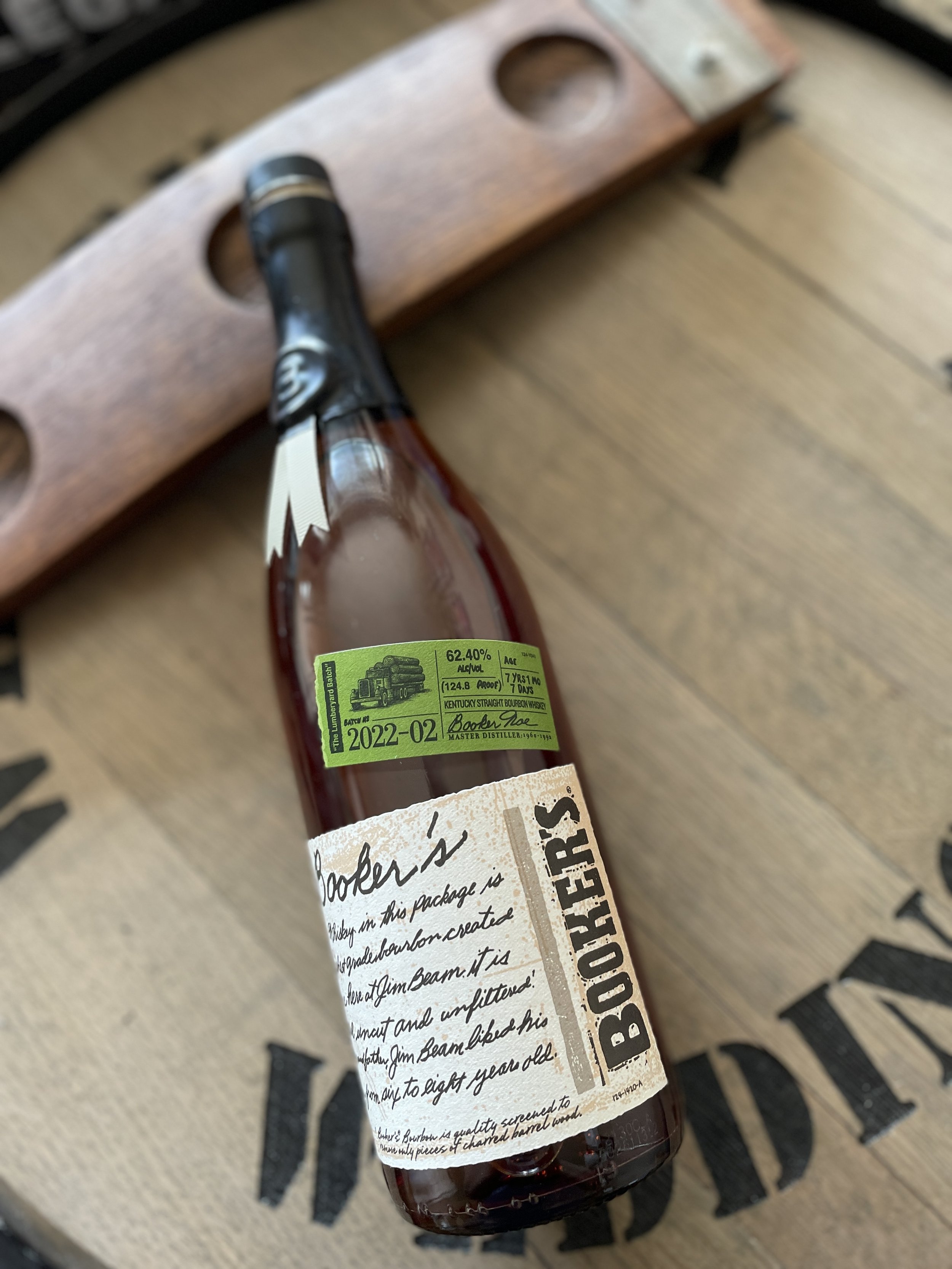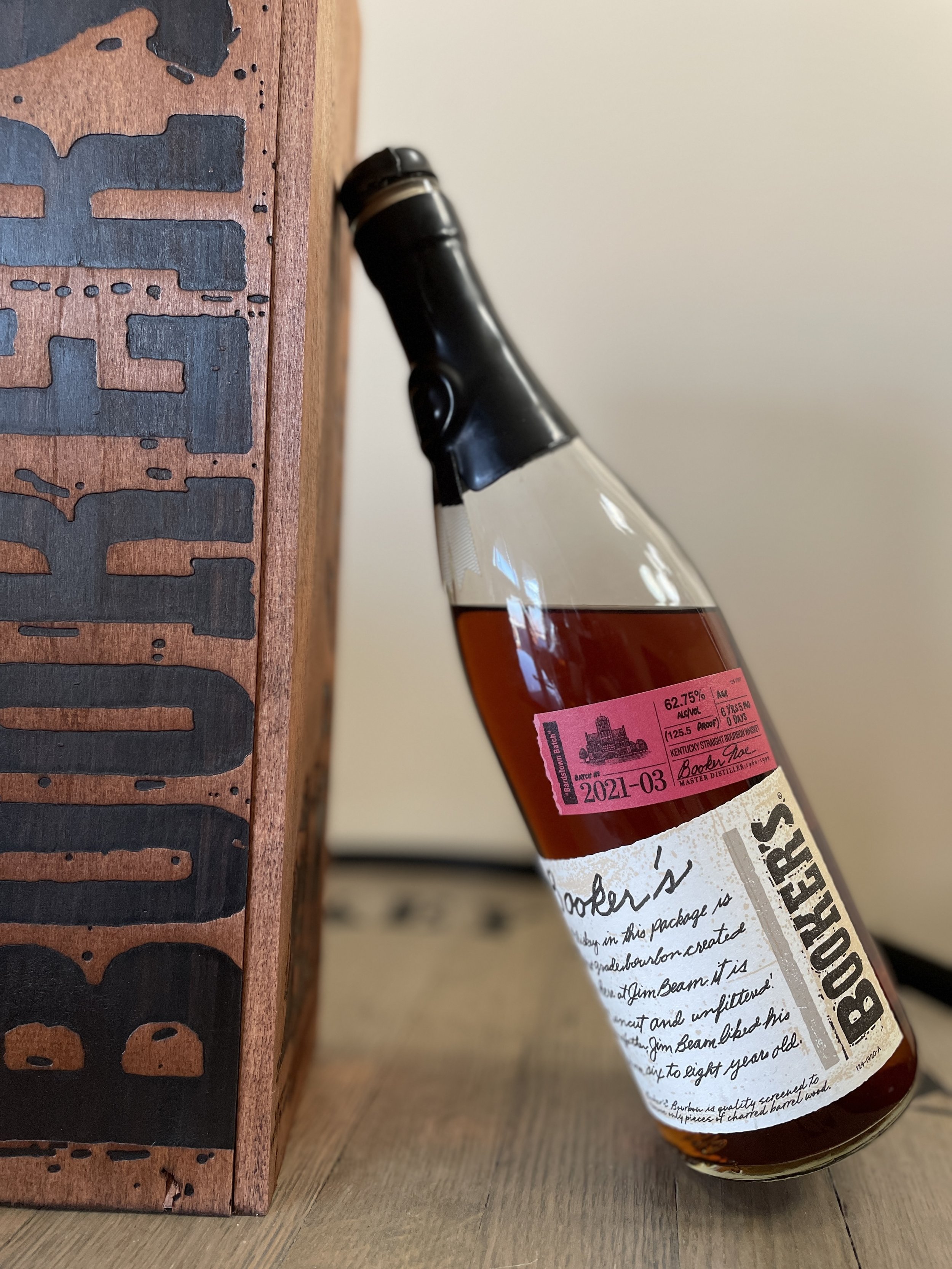Little Book Chapter 5: The Invitation
Little Book Chapter 5: The Invitation Bottle. Image credit: Jim Beam.
I’ve been told that when you try too many things - be it whiskey or something else - eventually, the thrill of trying new things wears off. That hasn’t happened to me quite yet, but I’ll admit to keeping an eye out for it.
So, certain releases - Little Book, a new Barrell blend, things like that - provide solid excitement whenever they come out. Plus, as a big fan of both blending and new ways of exploring American whiskey, I’ll always be willing to give it a shot.
That being said….
Some of the Little Book releases look great on paper but are so-so in the glass, and one or two reversed that. This one, though, had me worried right out of the gate. Three of the four components are at poles on the whiskey spectrum: a 2-year-old straight bourbon, a 3-year-old straight rye, and a 15-year-old straight bourbon, which to me read as too young, possibly too young, and possibly too old. Add in that Beam isn’t exactly known for its rye, and red flags started popping up.
In an odd flip-of-the-odds, I’ve found younger ryes from newer distilleries to be much better than younger ryes from the heritage distilleries. An overgeneralization? Maybe, but looking at my shelves that’s exactly what I’m seeing. A three-year-old rye from a pot still aged in a regular 53-gallon new oak barrel has been consistently better than the same from a huge column still. With new styles of rye - like the Three-Chamber Rye from Leopold Bros that’s more a revival than new - opening the doors for more to happen in the rye world, I’m more apt to look to the smaller operations than the big boys.
How does this tie back to Beam? Well, two- and three-year-old bourbon is basically Jim Beam White. Five-year-old bourbon is around the Jim Beam Bonded or Black/Double Oak, and the fifteen-year-old bourbon is basically Knob Creek. But what about the rye? None of Beam’s rye-containing products, even the straight ryes, are put out at just three years old. Make it a 100% malted rye and…well, that doesn’t change the previous statement.
In short, each of these products are very, very clear in the final blend. And in a blend, that’s not exactly what you want. The barely-legal straight bourbon, the young rye, and the over-oaked Knob Creek wannabe whiskey all clash (where the five-year-old bourbon is, I can’t say). Sometimes I look at a blend on paper and understand where it’s supposed to go, whether or not the final product actually gets there. Here, I see a mess waiting to happen, and frankly a blend that’s not characteristic of the Little Book line. I expect the unusual - lesser-used grains, blending otherwise unavailable Beam products, things like that. But it’s hard for me to believe these components were ever going to work well, not even in the capable hands of Freddie Noe himself.
Unfortunately, that’s precisely what the result was.
Little Book Chapter 5: The Invitation American Whiskey: Specs
Classification: American Whiskey
Origin: Jim Beam
Mashbill: Undisclosed
Proof: 116.8 (58.4% ABV)
Age: 2 Years Old Kentucky Straight Bourbon, 3 Year Old Malted 100% Rye Whiskey, 5 Year Old Kentucky Straight Bourbon, 15 Year Old Kentucky Straight Bourbon
Location: Kentucky
Little Book Chapter 5: The Invitation American Whiskey Price: $124.99
No Official Website
Little Book Chapter 5: The Invitation American Whiskey Review: Tasting Notes
Eye: Orange blossom honey. Thin, stable rims with blasé droplets.
Nose: Warm baked wheat bread. Caramelized, almost burning grain in a pot still bottom. Light proof heat, red fruits fresh and dried. Whole cloves, vanilla extract and orange zest.
Palate: Peppery up front and quite oaky, with red fruit trying to break through (largely unsuccessfully). That oak is so strong. Mouthfeel is light side of medium, with roasting mixed nuts opening up on the back end. Minty oak and a creamy element try to break through, too, as unsuccessfully as the red fruit.
Finish: A bit of the red fruit, but damn that oak is just too strong - it’s flat-out overpowering.
Overall: The oak is so strong that the proof is barely noticeable. What red fruit flavors there are are blown out by pepper and wood, young rye notes, and burnt grains. Unfortunate, but the ingredients for this may have made for a bad combination from the start.
Final Rating: 4.6
10 | Insurpassable | Nothing Else Comes Close (Elijah Craig Barrel Proof Old Label Batch 4 or 2, Blanton’s Straight from the Barrel)
9 | Incredible | Extraordinary (GTS, Elijah Craig Barrel Proof B518 and B520)
8 | Excellent | Exceptional (Stagg Jr. Batch 10, Highland Park Single Barrels)
7 | Great | Well above average (Blanton’s Original, Old Weller Antique, Booker’s)
6 | Very Good | Better than average (Four Roses Small Batch Select, Knob Creek 14+ YO Picks)
5 | Good | Good, solid, ordinary (Elijah Craig Small Batch, Buffalo Trace, Old Grand-Dad Bottled-in-Bond)
4 | Sub-par | Many things I’d rather have (A.D. Laws Four Grain, Compass Box “Oak Cross”)
3 | Bad | Flawed (Iron Smoke Bourbon, Balcones)
2 | Poor | Forced myself to drink it (Buckshee Bourbon and Rye)
1 | Disgusting | Drain pour (Virginia Distilling Co. Cider Cask)










